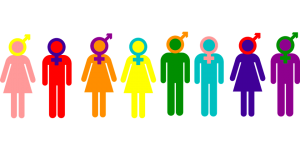By Sasha Haig
One of the most common, and important, questions we get is “how big is your panel.” It’s a valid and important question but it hides a lot of truths. Let’s break that question apart into the essential components.
Who is a panelist?
A panelist is NOT anyone who’s been asked to participate in research. More specifically, email lists are not comprised of panelists, and surveys conducted using email lists do not rely on panelists. Rather, a panelist is someone who has registered with a research panel, has consented to participate in research projects, and has shared a standard set of data, usually demographic and psychographic information. Capturing all of these details allows panel companies to monitor participation behaviors for groups and individuals, and ensure that they invite people to participate in research that is appropriate for them. For example, only people who have arthritis should be invited to a survey about arthritis.
Who is an active panelist?
Just because someone registered with a panel does not mean they are an active panelist! Upon joining a panel, some people never actually complete a survey. They may have received survey invitations but didn’t find the time to complete any. These people are ‘Inactive Panelists.’ On the other hand, ‘Active Panelists’ have completed tasks that were asked of them. For instance, they updated their profile data after being asked to do to. Or, they completed a survey after being asked to do so. More precisely, active panelists have completed at least one task requested of them within a specific time frame. Usually, this time frame is the last 12 months.
Who are your panelists?
Panels shouldn’t look like the population! Most social and research panels look nothing like the population and this is on purpose. For instance, even though Canada is approximately 50% male and 50% female, the Canadian Viewpoint panel is about 28% male and 72% female. We factor our clients’ needs into the recruitment process so that if our clients do more research with women, we recruit more women to the panel. Similarly, if our clients do more research with younger people, we recruit more younger people. Whether a client needs a census rep sample or a sample of moms with children aged 2 to 9, the demographic profiling variables can be used to select the right sample of people. This also ensures that everyone on the panel receives a reasonably number of survey invitations, not too many and not too few.
Are larger panels better panels?
Strangely, larger panels are not necessarily better panels. Now that we know what an active panelist is, it’s easy to see that panel size can be easily misconstrued. A panel that has one million people registered but only 200 000 active panelists is really the same size as a panel with 400 000 people registered and 200 000 active panelists.
So how do I know which is the best panel?
Best is in the eye of the beholder. The best panel is precisely the one that suits your research needs. It offers people who are active panelists which will ensure responses will be received within a suitable length of time, people with the psychographics or demographics you need to hear from, and, of course, it has enough of those people.
You might like to read these:
- What sample size do I need for my market research questionnaire?
- How to ask gender, age, employment, and income questions on self-completion surveys
- Top 5 tips for writing a questionnaire people will want to answer
Sasha Haig is an Account Manager at Canadian Viewpoint. She loves tackling the complex multi-modal studies while working collaboratively with clients to ensure their research objectives are met, and looking for new ways to approach data collection. In her free time, she likes hiking and sharing her unique tastes in cooking on her food blog.




